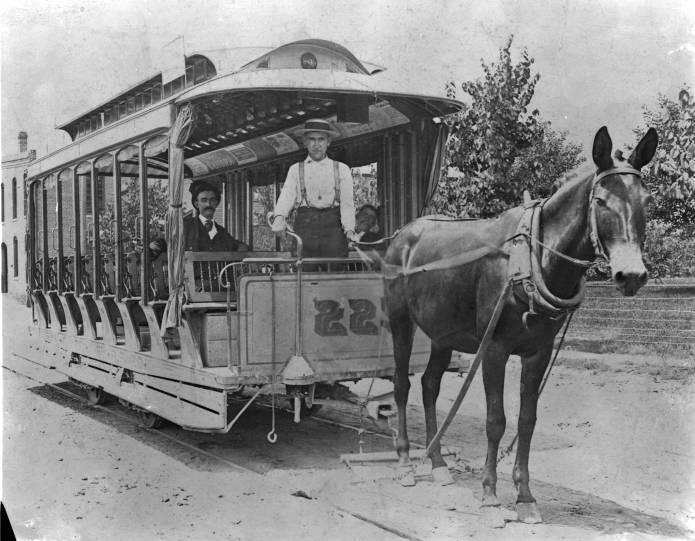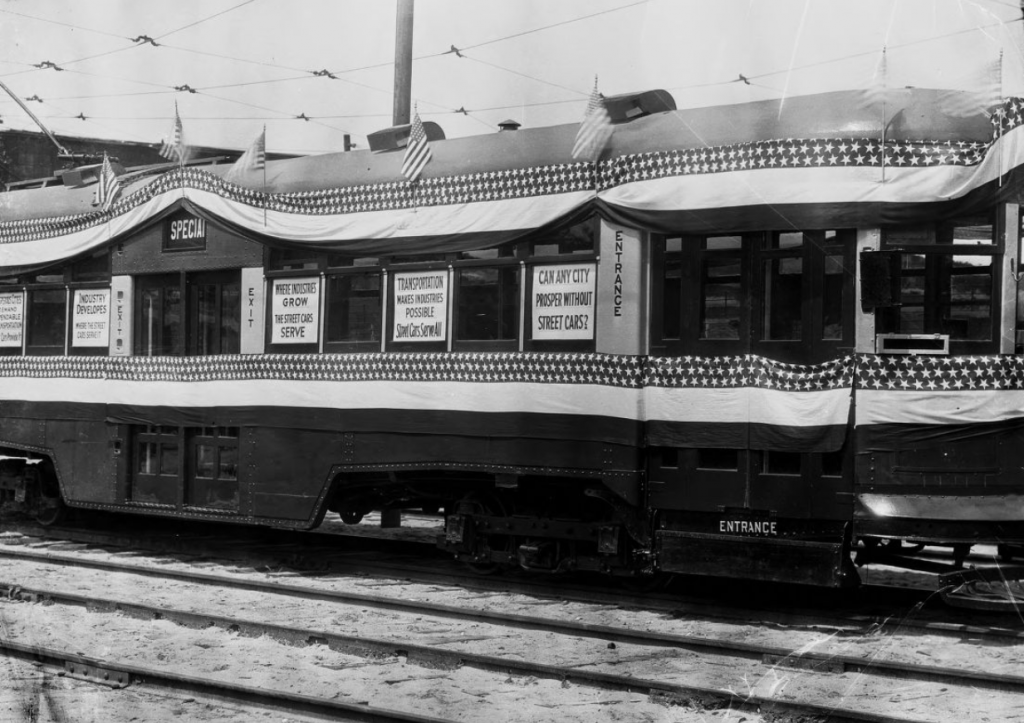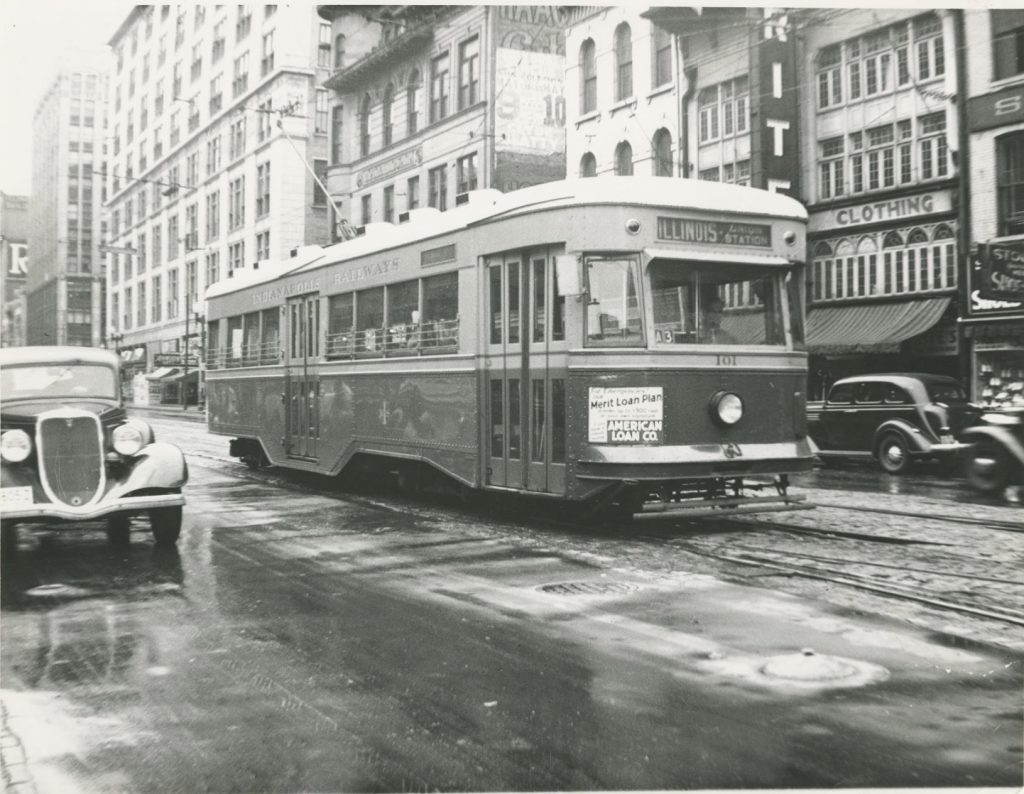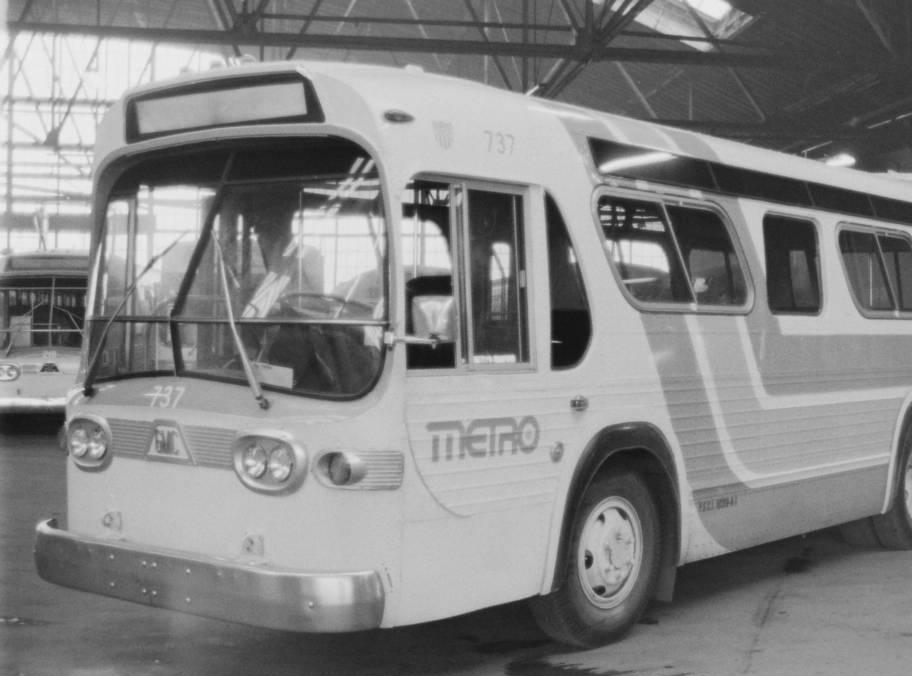The origins of public transportation in Indianapolis date to 1863 when the Citizens’ Street Railroad Company competed and won against a local firm headed by Indianapolis railroad developer to secure an exclusive 30-year franchise in Indianapolis. On October 1864, Citizens’ Company had laid tracks and put into service a new streetcar. The streetcar was drawn by mules over iron rails laid down in the middle of Illinois Street’s dirt road.

Over the next few decades, Citizens’ Company added several streetcar lines connecting downtown Indianapolis to outlying neighborhoods. It also underwent several changes and faced many challenges. In 1866, control of the Citizens’ Company passed to , a local politician and businessman. In 1877, the company sold its lines to Louisville operators, who immediately fired the conductors and installed automatic fare boxes. A year later, a new company sought permission to construct rival lines radiating out from a depot at the to better serve the suburban fringe. The Citizens’ managers successfully defended their monopoly against this company, but they found themselves repeatedly challenged to improve and extend service.
In 1886, Charles F. Bidwell opened a new era of public transportation by proposing an electric road which would eliminate the need for mules and bring clean, quiet, and inexpensive locomotion. For its part, the Citizens’ Company started to electrify its lines in 1889 and had the first electric streetcar in operation in Indianapolis by 1890. As it neared the end of its franchise
By the end of the 1800s, protracted negotiations, lawsuits, and injunctions grew as rival groups sought exclusive rights to construct and operate public transit lines. Seeking to protect the interests of riders and taxpayers, secure good service, and still attract investors competent to the task, the Indianapolis Board of Public Works entered into a franchise deal with the Indianapolis Street Railway Company in 1899 which consolidated the interests of the Citizens’ Company along with the City Railway Company.

Through the early 1900s and the 1920s, this Indianapolis Street Railway Company tried to meet the challenges of growth. It opened its lines for use to in 1900. By 1912, Indianapolis boasted one of the finest urban transit systems in the country, but labor conflicts, high prices, low fares, and automotive competition gradually undermined profitability. In the 1920s, the system’s excellent reputation disintegrated before complaints of corruption, profiteering, incivility, and indifference to the public interest.
The found public transportation dying in Indianapolis. The old Indianapolis Street Railway Company staggered under an inflated capital burden of $19 million that consumed $811,000 annually in interest, leaving nothing for capital improvements, rolling stock, or expansion. While consumers experimented with automotive travel, the city transit system deteriorated: service fell off, employees grew anxious and disgruntled, cars decayed, and patronage declined further. Facing bankruptcy in 1932, the owners tried radical action. Led by Charles W. Chase, who recently had rescued Gary’s railway system, the company was reorganized into Indianapolis Railways, Inc., which launched a daring program of revitalization.
By writing down capitalization, the reorganized company reduced its burden of interest by more than half. Then Chase asked equipment suppliers to sell them new rolling stock on credit, which depressed manufacturers proved willing to do. While awaiting the new equipment, Chase spent what little cash he had to renovate overhead wires and tracks, all the while asking riders and workers what was wrong with the existing operations. Soon 25 new (for the main lines), 15 trackless trolleys (electric cars on rubber tires that could swing out to curbs for loading), and 30 gasoline buses (for low-service routes) graced the streets of Indianapolis, and public perception improved as a result.

Encouraged by signs of enthusiasm, Chase doubled his equipment order in 1933 and pressed the system for speed and efficiency. Revenues went up, and expenses went down. By 1935, new operating income had increased 100 percent while fares remained fixed at seven cents. Chase secured an unprecedented $3 million loan from the federal Public Works Administration to expand further the Indianapolis system and buy even more state-of-the-art cars. In six years, he had delivered a new transit system, boosted patronage by more than 25 percent, and reversed a national trend. Wrote Evan Walker in in April 1938: “Motorists began to leave their cars at home and ride the trolleys to work each day, housewives began to prefer the convenience of shopping on the trolleys rather than in their own automobiles, and businessmen began to see the economy of riding the streetcars instead of using taxicabs for their calls.”
The 1930s revitalization of the Indianapolis street railway system energized public transportation everywhere for another generation, but the challenge of the automobile had only been delayed, not destroyed. In the 1950s, the increase in highway development, car manufacturing, and middle-class purchasing power began to affect ridership. The competition grew as suburban sprawl developed new neighborhoods complete with roads, electricity, water, and sewer systems— but no trolley lines. Indianapolis Railways tried once more in 1952 to dazzle its customers with new rolling stock but to no avail. In January 1953, electric railway service in the city stopped.
In the mid-1950s, a Chicago-based firm acquired what was then called the Indianapolis Transit System, the all-bus remnant of the old street railway operation. Faced with declining patronage, the new owners began raising fares and curbing expenses in a self-defeating cycle.
Meanwhile, city leaders developed a regional transportation plan centered on seven new “interstate” expressways. Reformers, led by Mayor , were determined to reestablish the hub-city concept of railroad days, this time using the federal interstate highway system. Intended to give the city “a degree of access to the national highway network that is virtually unsurpassed by any other city,” Indianapolis’s “spaghetti bowl” of freeways served instead to facilitate thousands of commuters driving to work along lines ideally served by public transportation. Furthermore, while federal money built the expressways, the $35 million of city-county resources spent on street improvements to accommodate this car culture left local government inexorably invested in the highway network. As the marketplace increasingly favored the automobile, public transit simply could not compete, and by 1971, the Indianapolis Transit System reported net operating losses.

The era of subsidized public transportation in Indianapolis began two years later in 1973 when the established the Indianapolis Public Transportation Corporation to take over the foundering bus lines. , as the new firm was known, could tap tax revenues to close the gap between farebox receipts and operating costs. It perpetuated both the virtues and vices of earlier street railway systems–easy access to the Circle but cumbersome transfers for cross-town trips.
By the 1990s, the public transportation system had faced serious service cuts and a decrease in ridership. In an effort to reinvigorate the bus system, Metro was rebranded as IndyGo in 1996 and express routes were reinstated to increase the number of passengers and to attract new riders from outlying areas of Marion County. Indy Connect was created in 2009 to develop a long-term transportation plan through cooperation between private and public agencies. The Marion County Transit Plan, part of Indy Connect’s larger Center Indiana Transit Initiative plan, was developed in 2014 and called for a new grid network, longer service hours, and the addition of three bus rapid transit lines–the Red, Purple, and Blue lines. The first major implementation of this plan was in 2018 with the construction of the Red Line, a bus rapid transit line spanning from 66th Street on the north side down to the University of Indianapolis on the south side of the city.
A different form of public transportation came in 2002 (opened to the public in 2003) with the People Mover. The dual-track system ran over public streets and connected the hospitals in the system: Methodist Hospital, , and . It was created as a way for the shared staff of these hospitals to easily travel between the campuses but was also used by the public. The People Mover carried its last passengers on Wednesday, February 6, 2019.

Help improve this entry
Contribute information, offer corrections, suggest images.
You can also recommend new entries related to this topic.

